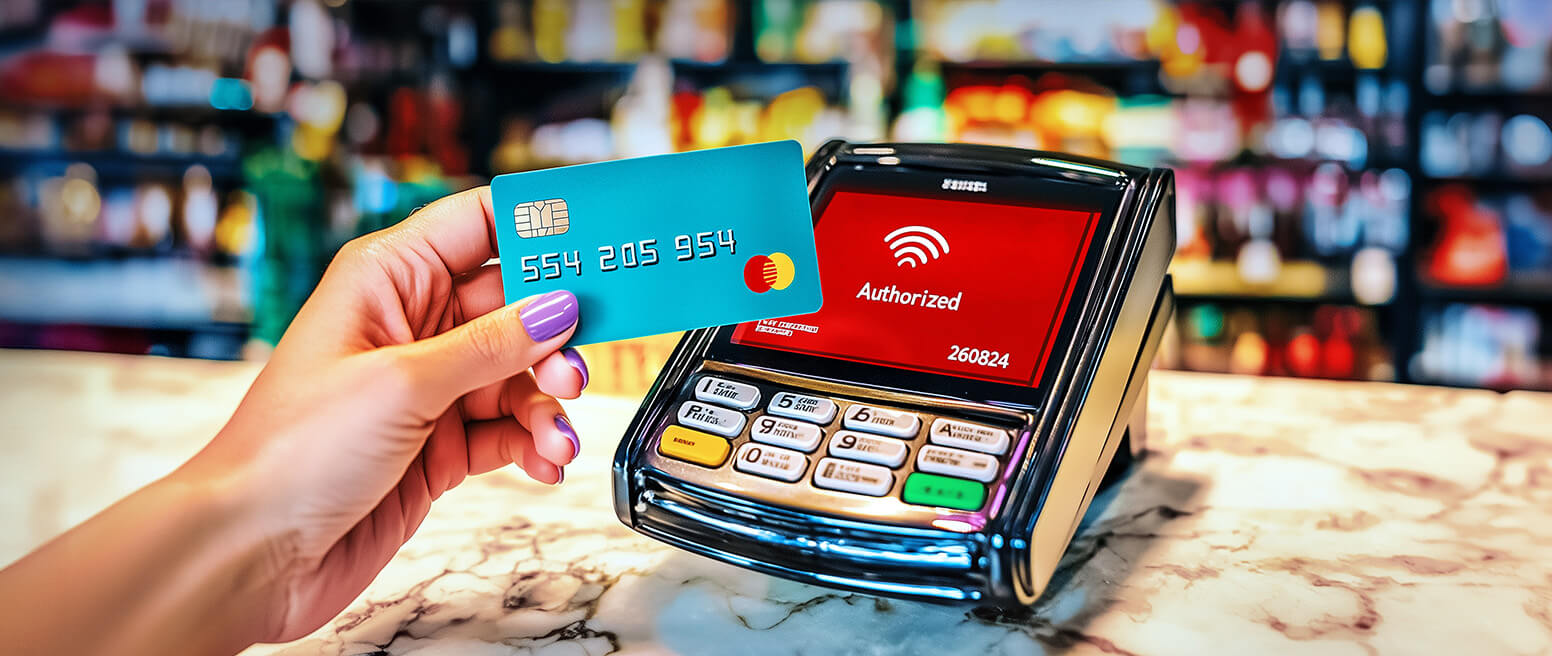What You Need To Know About Authorization Holds & How They’re Used
Placing an authorization hold on a credit card transaction is a smart, safe, and easy way to reduce costs and prevent unnecessary hassles, like having to reauthorize a transaction or provide a refund. They can also protect you from fraud and help prevent chargebacks, too.
The use of authorization holds is a standard procedure within some industries. However, nearly all merchants who accept credit cards can benefit from this helpful tool. Let's take a look at what a hold is, how it works, and why you should consider using it.
Recommended reading
- Do You Know the Credit Card Authorization Codes?
- What Are Transaction IDs? How They Help Stop Fraud
- Credit Card Decline Codes: The Complete List for 2025
- Credit Card Decline Rate: How to Calculate & Recover Sales
- What are Card-on-File Transactions?
- Credit Card Transaction Process: How the 5 Step-Cycle Works
What is an Authorization Hold?
- Authorization Hold
An authorization hold is a temporary hold placed on a portion of the funds or available credit in a cardholder’s account. This is usually done because the final total of a transaction is unknown at the time authorization is requested, such as at hotels or gas pumps.
[noun]/aw ● ther ● uh ● ZAY ● shunn ● hohld/
Authorization is the bank’s way of saying that the customer has the funds or credit available for the purchase. You will eventually get the funds if the authorization request is approved. However, this will only happen after the transaction is settled.
Let's say you operate a gas station, though. Your customer swipes a credit card before pumping their gas, which means you have to seek authorization before you learn the total cost of the transaction. This is where authorization holds come in.
As a merchant, you can use an authorization hold (sometimes known as a “pre-authorization” or “pre-auth”) to ensure you actually get paid for purchases made via credit or debit card. A hold locks in the funds you're owed due to a payment card transaction until that transaction is settled and the bank transfers the funds to the merchant’s bank.
How Do Authorization Holds Work?
To understand how pre-auths work, it helps to take a step-by-step look at the entire card transaction process:
Step #1 | A customer swipes or dips a payment card.
Step #2 | The authorization request is sent to the cardholder's issuing bank
Step #3 | Assuming the transaction is authorized, the bank automatically puts a hold on the transaction amount
Step #4 | You submit the transaction for settlement in your next batch.
Step #5 | The temporary hold is released, and the final cost of the purchase is transferred from the customer’s account to yours
An authorization hold temporarily decreases the consumer’s available credit limit (for a credit card) or available funds (for a debit card). However, the amount held should be a reasonable figure based on the type of transaction.
The actual funds transfer only happens after you submit a batch of transactions to your acquiring bank. Even if you submit batches regularly, the funds could still take several days to show up in your account. That timing could create a problem.
Without an authorization hold, a cardholder could theoretically make a purchase, then drive straight to an ATM and withdraw all the money in the account. If that happens, you get stiffed. But with a credit card authorization hold in place, the cardholder can’t access the money. It remains on hold until settlement (or until the time limit runs out).
Why Use Authorization Holds?
An authorization hold is designed to slow a transaction down long enough to verify everything is as it should be before funds are exchanged. Using holds is beneficial for you and your customers because it helps secure payment without immediately drawing funds from the customer's account. It allows for adjustments and provides transparency throughout the transaction process.
Let’s break down how imposing an authorization hold benefits both parties involved in a transaction:
Benefits for Merchants
Reduced Risk of Fraud and Chargebacks
By verifying that funds are available before the service is rendered or the goods are delivered, you can significantly reduce your risk of fraud and chargebacks.Better Cash Flow Management
Authorization holds present a clearer picture of pending transactions, which can help you manage cash flow more effectively. Your operations aren’t hindered due to unexpected declines.Enhanced Customer Service
Authorization holds allow for adjustments to the total bill without requesting additional authorization. This is useful when the final total is not known at the time authorization is requested.Minimized Payment Processing Costs
By securing authorization upfront, you can avoid the fees associated with declined transactions on the final billing. This proactive approach can lead to savings on payment processing fees over time.Benefits for Consumers
Transparency & Control over Spending
Authorization holds inform customers about potential charges to their accounts, preventing surprises and helping consumers manage their budgets more effectively.Protection Against Overcharging
Since the amount is predetermined, consumers are protected against being overcharged. In case of a dispute, the hold provides a reference point for what the merchant intended to charge.Seamless Transactions
For services that might have variable charges, such as car rentals, holds ensure the payment process is seamless. Consumers don't have to worry about multiple transactions and adjustments.Enhanced Security
Authorization holds are a sign that the merchant is taking steps to secure transactions against fraud. This additional layer of security can provide peace of mind to consumers.When Should You Use an Authorization Hold?
Implementing authorization holds can be useful when services or goods are consumed over time, or additional charges may apply based on usage. The unifying thread in these scenarios is the need to secure payment while providing flexibility to adjust final charges based on actual consumption or use.
Below are a few common scenarios and examples illustrating when using an authorization hold would be both useful and necessary:

How Long Can a Credit Card Authorization Be Held?
All authorizations must be either settled or reversed within 31 business days of the transaction date, at most. However, many authorization holds have a shorter time frame; in most situations, a hold must be either settled or reversed within 7 business days or less.
The time limit for an authorization hold depends on different factors. Your merchant category code (MCC), the card network, and the type of payment card used all play a role. Most debit card transactions have a hold time of between one and eight business days. For credit card transactions, though, the hold might last as long as a month.
The card networks understand that this can create problems for both merchants and cardholders. Their regulations reflect a delicate balance. They want to give you enough time to settle the account while holding the customer's funds for as short a time as possible. To illustrate, let's look at regulations from one of the card networks.
Visa rules offer the following authorization hold limits based on the type of transaction:
| Type of Transaction | Authorization Hold Limit |
| Most Card-Present Transactions | Day of authorization** |
| Most Card-Not-Present (CNP) Transactions | 7 days from the date of the initial authorization |
| Lodging, Vehicle Rentals, & Cruise Lines | 31 days from the date of the initial authorization |
| Other Rental Merchant Categories | 7 days from the date of the initial authorization |
| Commuter Transportation (Buses, Trains, etc.) | 3 days from date of initial authorization (US only) |
** In other words, the transaction must be submitted for processing on the same day authorization was granted.
Awareness of authorization hold time limits is important for two reasons. First, if you don't settle the transaction in the allotted time, you must resubmit the transaction for processing. This is a hassle at best…and impossible at worst.
The other reason is what’s called a “misuse fee.” This is when Visa or Mastercard imposes fees for authorizations that are not settled (or reversed) within the given time limit. This might happen if you don't charge an account until after shipping an order. For customers, this is reassuring; they won't see the charge until their purchase is on its way. If the order is delayed and the pre-auth remains unsettled for too long, you could get slapped with a misuse fee.
Can Authorization Holds Go Wrong?
Yes. While authorization holds are an important tool in managing transactions, there are instances where they can lead to complications, affecting both merchants and consumers. Here are a few examples in which an authorization hold can be mismanaged or deployed improperly:
Authorization holds are generally beneficial and widely used. That said, awareness of their potential complications and implementing strategies to mitigate these risks is essential for smooth financial transactions.
Best Practices for Deploying Authorization Holds
Deploying an authorization hold effectively requires a balance. You have to think about safeguarding your business's financial interests, and also ensuring a positive customer experience. To navigate this, here are some best practices to follow when implementing authorization holds:
#1 | Clear Communication
Always inform customers upfront about your authorization hold policies. This includes the amount to be held, the reason for the hold, and how long the funds will be held before release. Transparency helps build trust and understanding, reducing potential friction.
#2 | Provide Accurate Hold Amounts
Estimate hold amounts as accurately as possible. For services where additional charges might accrue (e.g., hotels, car rentals), ensure the hold covers potential expenses without excessively tying up customer funds.
#3 | Timely Processing
Process authorization holds and final charges promptly. Once the service is rendered or the product is delivered, finalize the transaction quickly to release any excess held funds back to the customer's account. You want to minimize any financial inconvenience.
#4 | Avoid Excessive Hold Amounts
Never place holds for amounts significantly higher than the expected transaction value. This can lead to potential financial hardships for them, impacting customer satisfaction and potentially leading buyers to demand a cancellation or refund.
#5 | Eschew Long Hold Durations
Avoid unnecessarily long hold durations. Once the transaction is complete, or it's clear that the hold amount will not be needed, release the hold as soon as possible. Otherwise, the buyer may get antsy and call the bank for a chargeback.
#6 | Rethink Inflexible Policies
Rigid hold policies that don’t account for special circumstances or customer feedback are probably a bad idea. Being flexible and responsive to individual situations can improve customer satisfaction.
#7 | Regular Training
Make sure your staff is well-trained in the mechanics and customer service aspects of authorization holds. They should be able to explain the process to customers and resolve any issues that arise efficiently.
#8 | Don’t Ignore Regulations
Be aware of, and compliant with, all relevant regulations and card network rules regarding authorization holds. This includes rules around the duration of holds and conditions under which they can be used.
#9 | Monitor & Adjust Policies
Regularly review your authorization hold policies and practices. Be open to adjusting your approach based on customer feedback, business operation changes, or regulation updates.
#10 | Technical Support & Backup
Keep your technical support readily available. In case of system failures that affect authorization holds, having a backup plan can help avoid disruptions.
Your business can use authorization holds to manage financial risks while maintaining positive customer relationships by adhering to these best practices. This balanced approach is key to leveraging the benefits of authorization holds without sacrificing customer satisfaction.
Authorization Holds: Great, but Not Enough
Regular use of authorization holds can be a simple and effective way to protect your business from chargebacks. It’s not enough by itself, though. You need a multi-tiered risk-management strategy that can evolve at the same pace as the payments space.
Ready to forget about chargebacks and get back to running your company? Chargebacks911® can take chargebacks completely off your plate and up your ROI. Contact us today to learn more.
FAQs
How does an authorization hold work?
An authorization hold temporarily freezes a specified amount of money in a customer's bank account or credit line to make sure funds are available for a purchase. However, the money is not transferred until the transaction is finalized. This hold is released if the transaction is canceled or adjusted to the final amount once the purchase is completed.
How long does an authorization hold last?
An authorization hold typically lasts anywhere from a few days up to a week for debit cards and possibly longer for credit cards, depending on the merchant's policy and the issuing bank's practices. The hold automatically expires if not finalized into a charge within this timeframe.
How do I remove an authorization hold?
To remove an authorization hold, you can either finalize the transaction, which converts the hold into a charge, or cancel the hold, instructing the bank to release the funds back to the customer's account. If issues come up, customers may need to contact their bank or the merchant to expedite the hold's release.
How many days do pre-authorization holds last?
A pre-authorization hold typically lasts from a few days to up to a week for debit cards and can last longer for credit cards, depending on the issuing bank's policies and the type of transaction.
Can I still use my debit card with an authorization hold?
Yes, you can still use your debit card with an authorization hold. Your available balance will be reduced by the amount of the hold, though, limiting how much you can spend until the hold is released.















